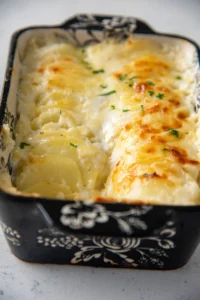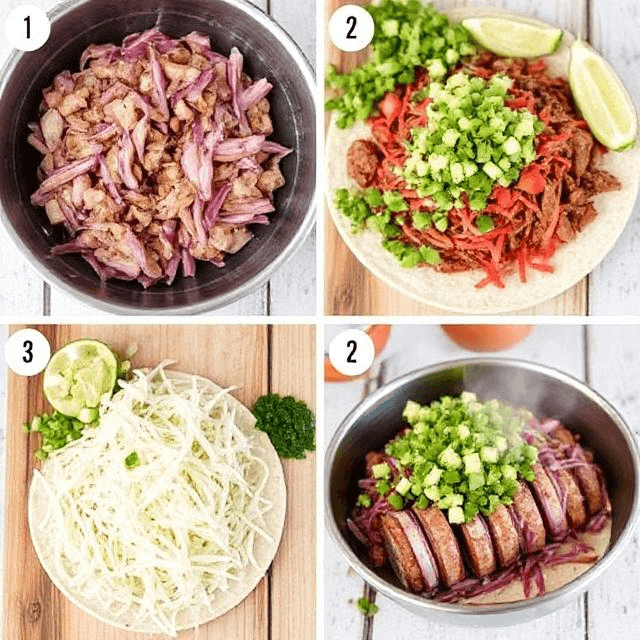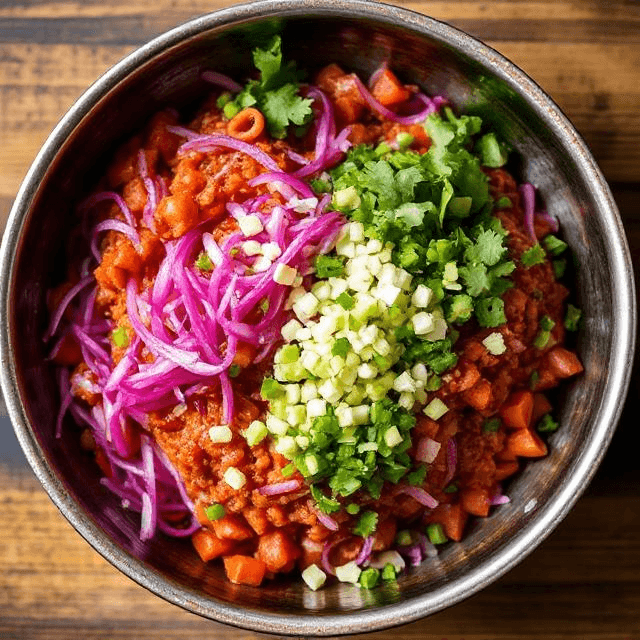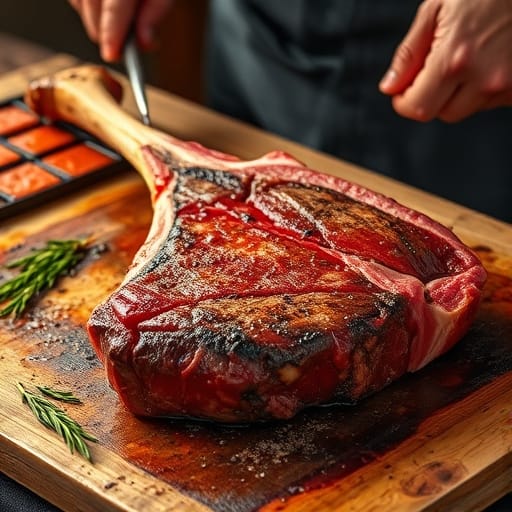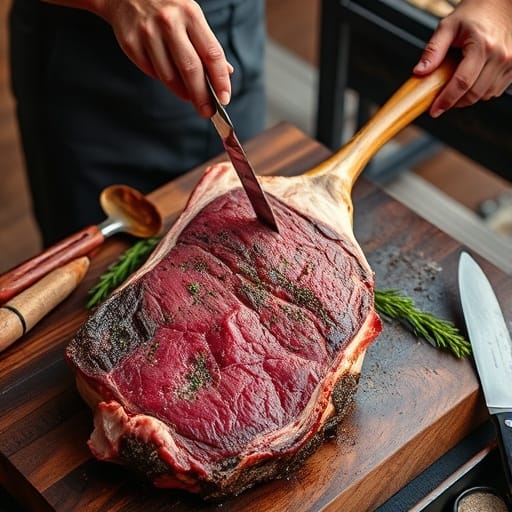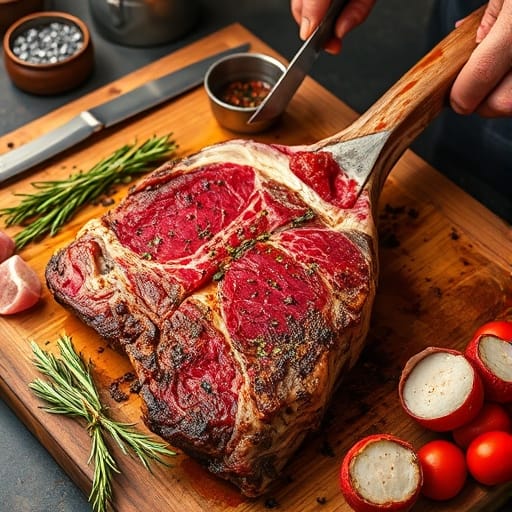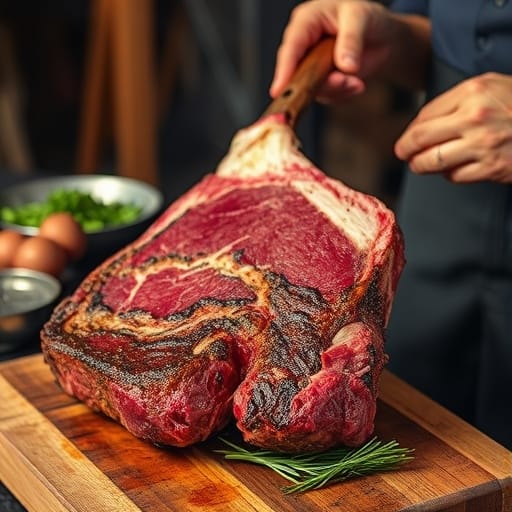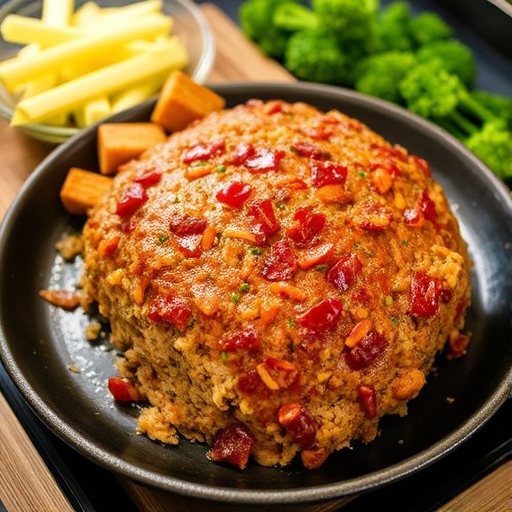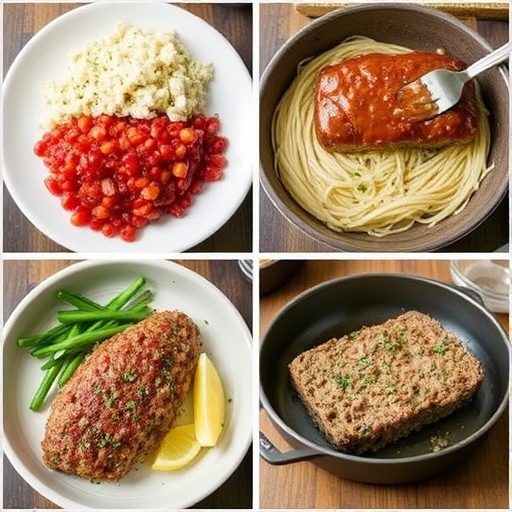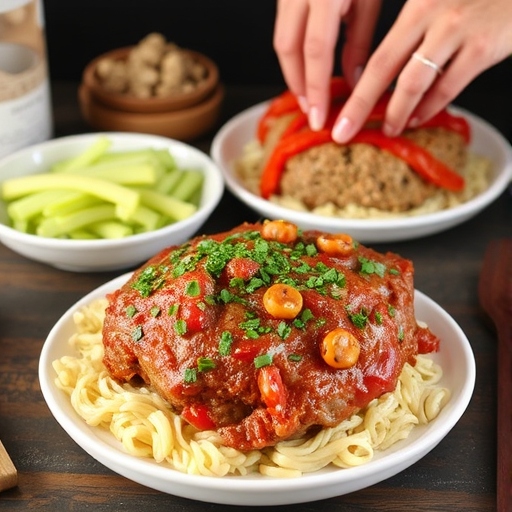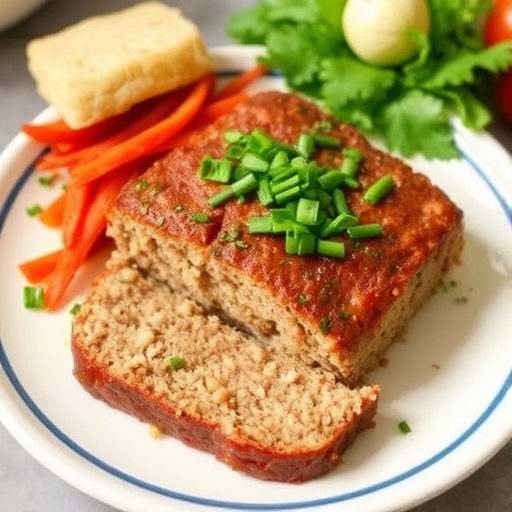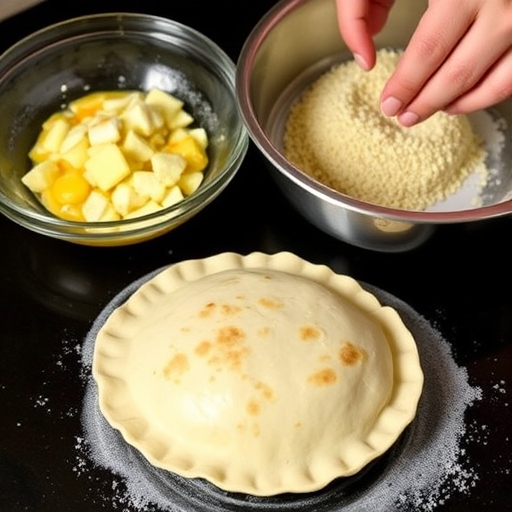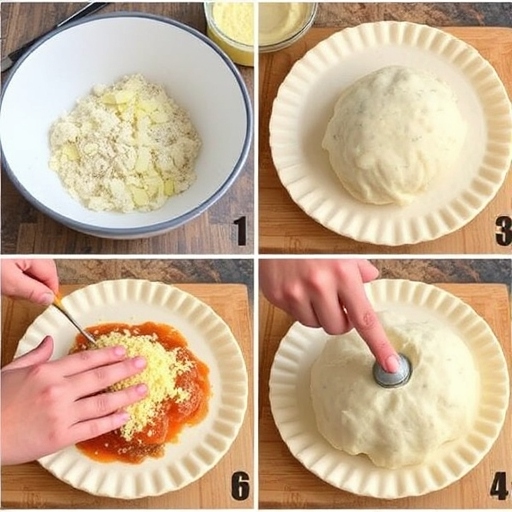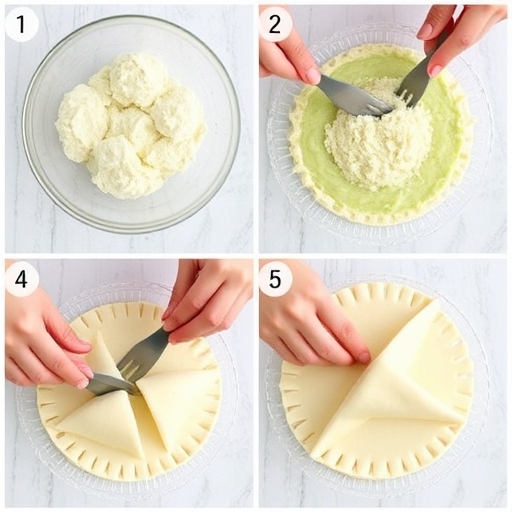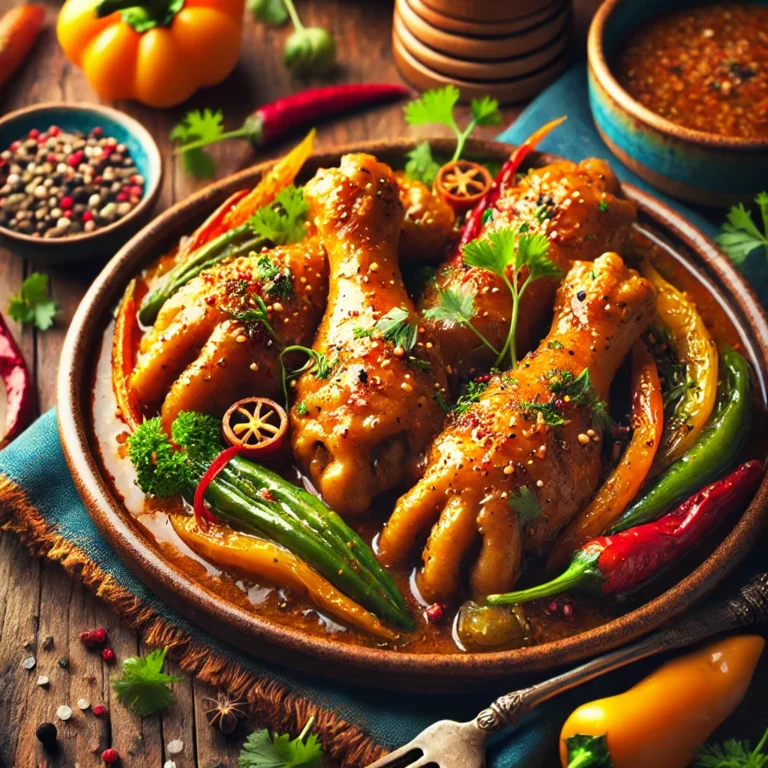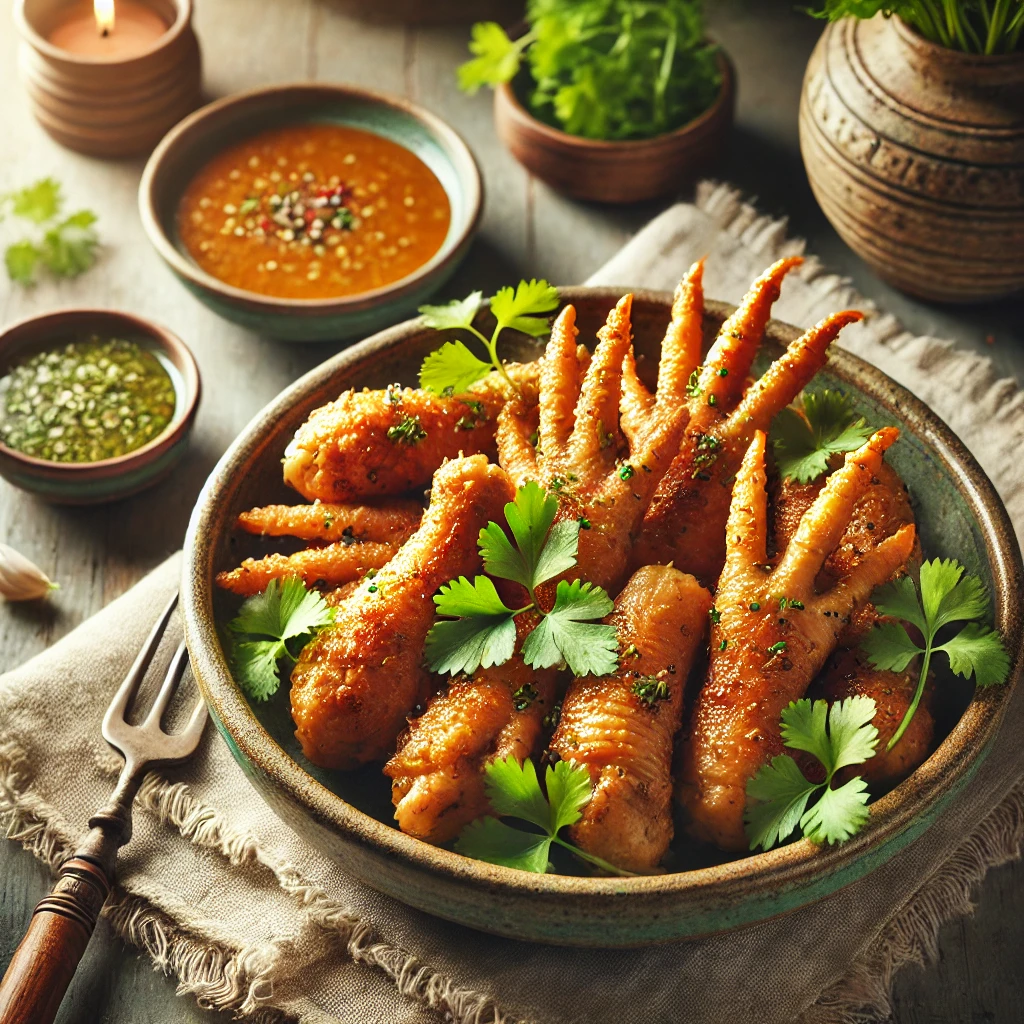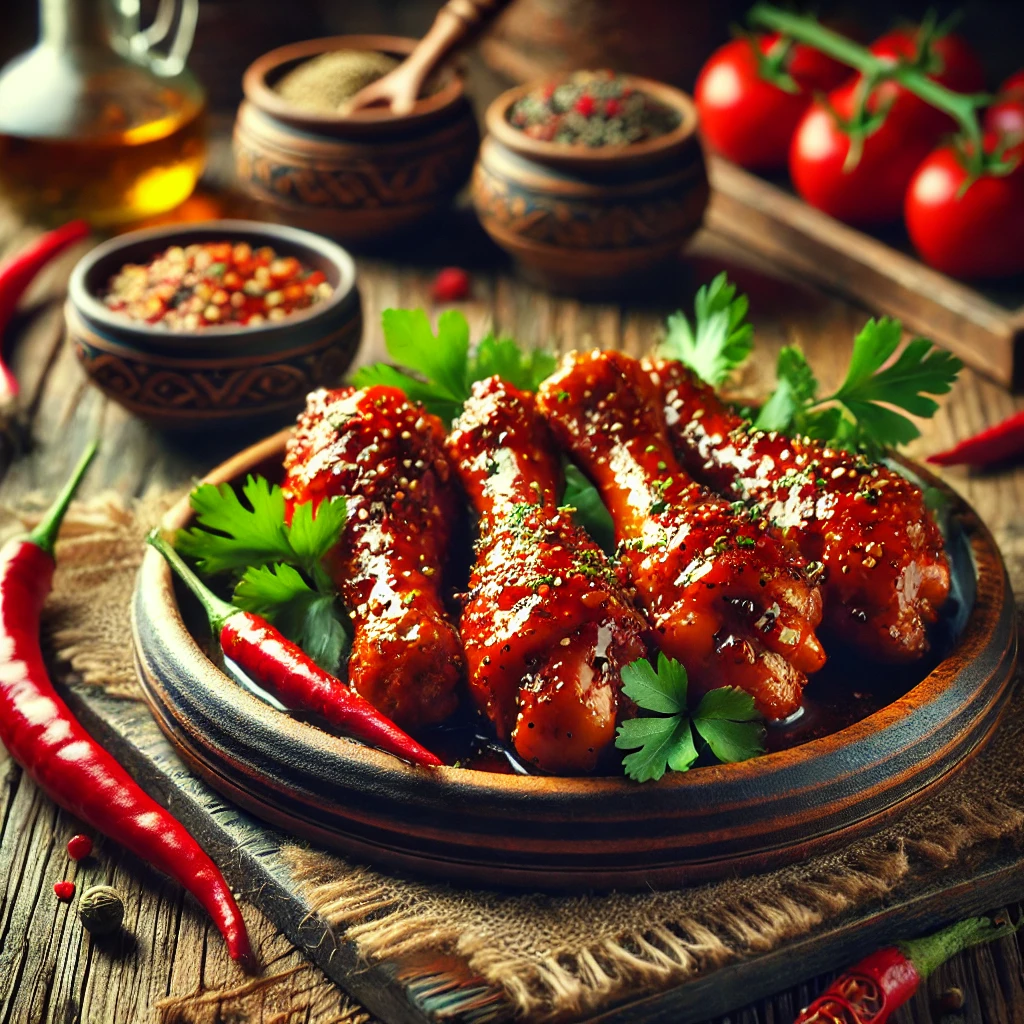There’s something magical about a dish that brings people together. For many, scalloped potatoes are more than just a side—they’re a reminder of family gatherings, holiday feasts, and cherished traditions. Whether it’s Easter dinner or a cozy Sunday meal, this recipe has a way of making moments feel special.
This classic scalloped potato recipe combines creamy richness with fresh thyme and sharp cheddar cheese. It’s a dish that’s both comforting and elegant, perfect for feeding a crowd. Unlike au gratin, which relies heavily on cheese, this version lets the creamy sauce shine while still offering a cheesy finish.
With a total time of just 1 hour and 30 minutes, this recipe is surprisingly simple to prepare. It serves 12, making it ideal for large gatherings, and can even be made ahead of time for stress-free hosting. Tested and perfected, this dish is sure to become a family favorite.
Key Takeaways
- Scalloped potatoes are a nostalgic comfort food tied to family holidays like Easter.
- This recipe balances creamy richness with fresh thyme and cheddar cheese.
- It differs from au gratin by focusing on a homemade cream sauce rather than heavy cheese.
- Total preparation time is 1 hour and 30 minutes, serving 12 people.
- The dish can be made ahead of time for convenience.
Introduction to Scalloped Potatoes
Rooted in tradition, this creamy dish has been a staple for generations. Originally a budget-friendly comfort food, it was created to make the most of simple ingredients like potatoes, milk, and butter. Over time, it evolved into a beloved recipe for family gatherings and holiday feasts.
Modern variations of this dish have expanded beyond the traditional milk-based version. Today, many recipes include cheese for added richness. Whether you prefer the classic or a cheesy twist, this dish remains a versatile favorite.
This recipe shines on special occasions like Easter or Christmas dinners. It also works well for cozy weeknight meals. Pair it with ham or roasted chicken for a complete, satisfying spread.
When it comes to ingredients, the choice of potatoes matters. Yukon Gold potatoes offer a buttery texture, while russet potatoes provide a firmer bite. Both work well, so choose based on your preference.
Nutritionally, this dish offers benefits too. A single serving contains about 286 calories, along with calcium and vitamin C. It’s a comforting yet nourishing addition to your table.
Ingredients for Scalloped Potatoes
Crafting the perfect dish starts with the right ingredients. For this recipe, the combination of fresh, high-quality components ensures a rich and satisfying result. Whether you’re cooking for a holiday feast or a family dinner, these elements come together to create a dish that’s both comforting and flavorful.
Essential Ingredients
The base of this recipe relies on a few key items. Start with 3 pounds of Yukon Gold potatoes, known for their buttery texture and ability to hold shape. You’ll also need butter and flour to create a smooth roux, which thickens the creamy sauce. Combine this with a blend of milk and broth for a velvety consistency.
Fresh thyme adds an aromatic touch, while sharp cheddar cheese brings a tangy finish. For seasoning, don’t forget salt and pepper to enhance the flavors. Slicing the potatoes uniformly to 1/8-inch thickness ensures even cooking and a perfect texture.
Optional Add-ons
If you’re looking to elevate the dish, consider a few upgrades. Crispy bacon bits add a smoky crunch, while caramelized onions bring a sweet depth of flavor. For a hint of warmth, sprinkle in some smoked paprika.
For a richer sauce, swap out regular milk for half-and-half. If you prefer a different cheese, try gruyere for a nuttier taste. These small tweaks can make the recipe uniquely yours.
How to Make Scalloped Potatoes
Mastering this classic recipe involves a few key steps that ensure perfection. From slicing to layering, each stage plays a crucial role in achieving the creamy, comforting dish you love. Let’s break it down into simple, actionable steps.
Preparing the Potatoes
Start by thinly sliced potatoes to about 1/8-inch thickness. Use a sharp knife or a mandoline for precision. Soak the potato slices in cold water for 10 minutes to prevent oxidation and remove excess starch. This step ensures even cooking and a perfect texture.
Safety tip: If using a mandoline, always use the guard to protect your fingers. A steady hand with a knife works just as well for thin, uniform slices.
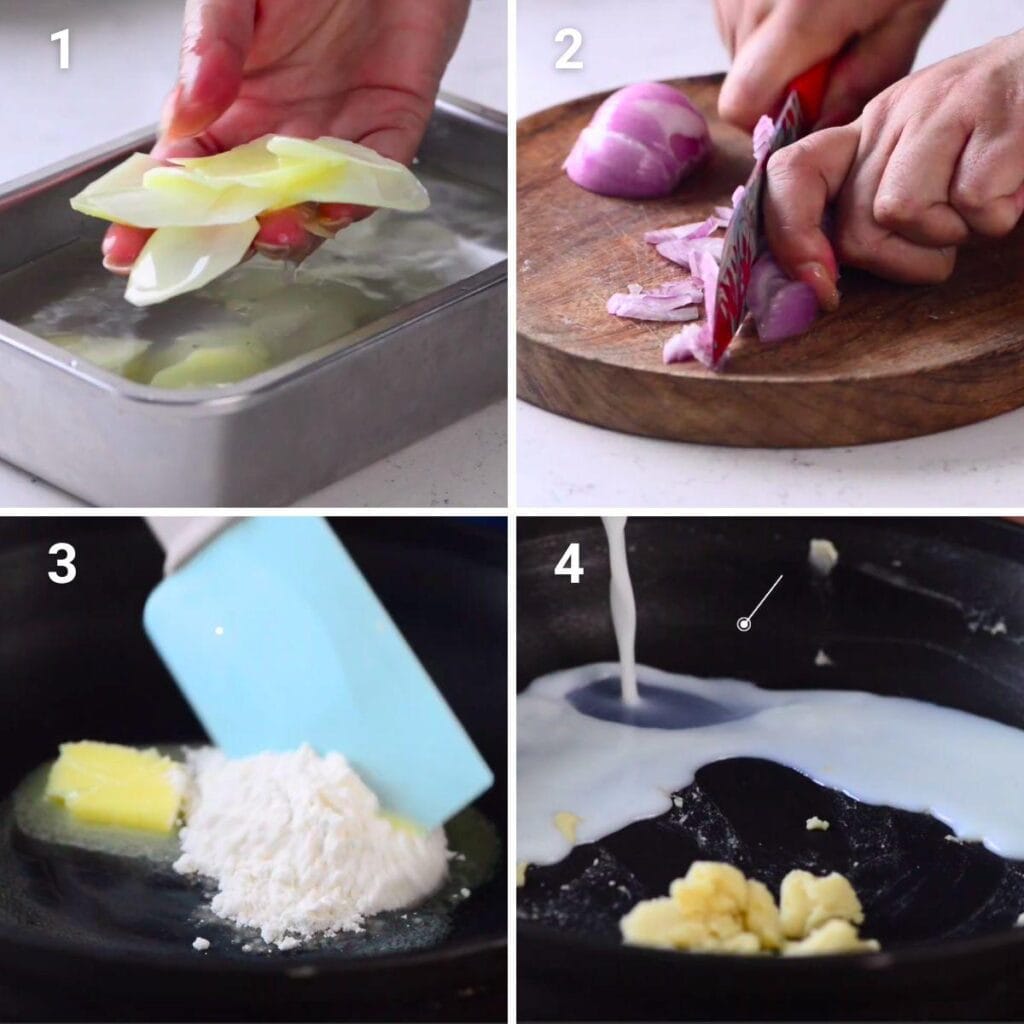
Making the Cream Sauce
Next, prepare the creamy sauce. Melt 3 tablespoons of butter in a saucepan over medium heat. Add 3 tablespoons of flour and cook for exactly 2 minutes to create a smooth roux. Gradually whisk in 2 cups of milk and 1 cup of broth to prevent lumps.
Bring the mixture to a gentle simmer, stirring constantly. Add fresh thyme, salt, and pepper for flavor. The sauce should thicken in about 5 minutes. Remove from heat and set aside.
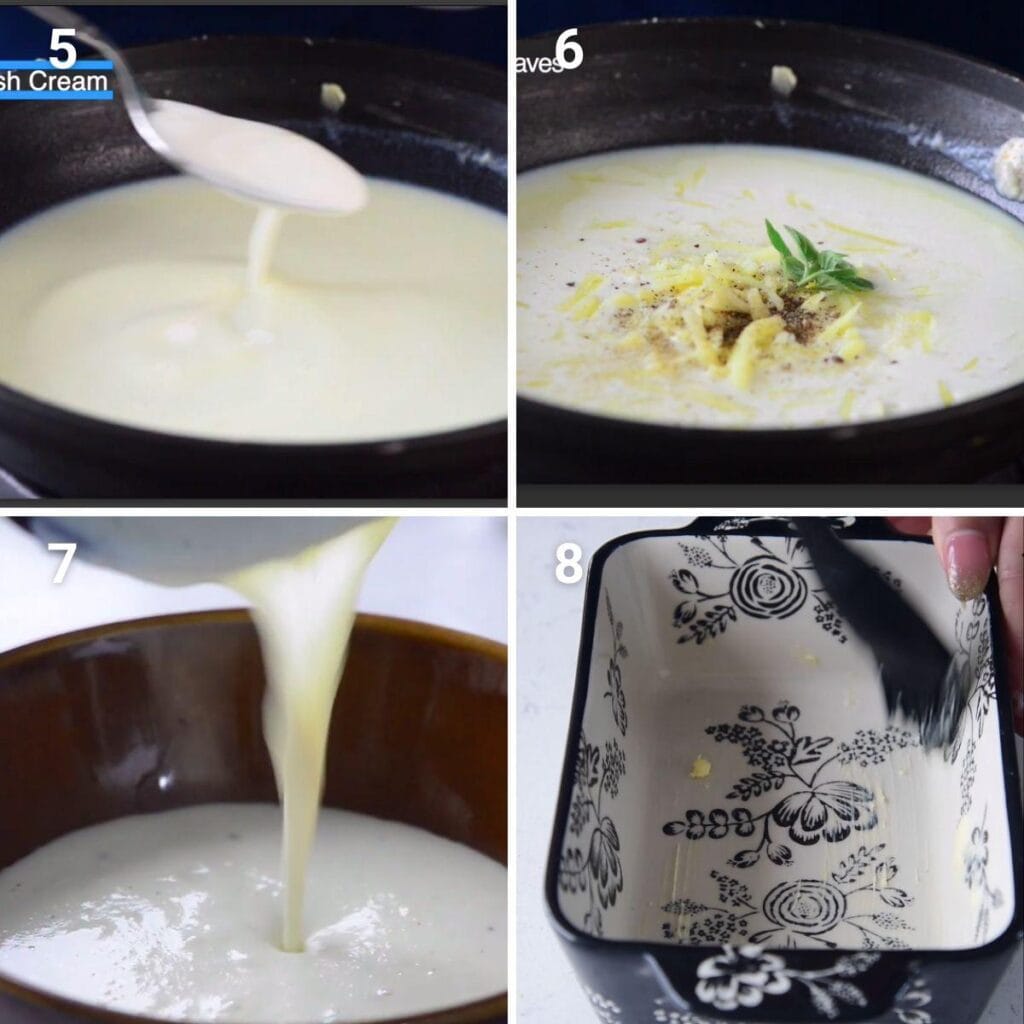
Assembling the Casserole
Now, it’s time to layer the dish. Grease a 9×13-inch baking dish and start with a single layer of potato slices. Add a sprinkle of caramelized onions, followed by a generous pour of the cream sauce. Repeat this layer pattern until all ingredients are used, finishing with a cheesy topping.

Here’s a quick guide to layering:
| Layer | Ingredients |
|---|---|
| 1 | Potato slices |
| 2 | Caramelized onions |
| 3 | Cream sauce |
| 4 | Cheese |
This method ensures even distribution and a perfectly baked dish. Cover with foil and bake at 375°F for about 1 hour, removing the foil for the last 15 minutes to brown the top.
Baking Scalloped Potatoes
Baking transforms simple ingredients into a comforting masterpiece. The oven plays a crucial role in achieving the perfect texture—tender slices with a golden, cheesy top. Whether you choose 375°F or 400°F, the key is to monitor the dish closely.
For the first 45 minutes, tent the dish with foil. This step traps steam, ensuring the potatoes tender evenly. After removing the foil, the edges should bubble, and the cheese should turn a rich, golden brown. These are clear signs your dish is ready.
Once out of the oven, let it rest for 20 minutes. This allows the sauce to thicken, making each bite creamier. For an extra crispy finish, broil the top for 3 minutes. This quick hack adds a delightful crunch to every serving.
“Patience is the secret to perfect baking. Let the dish rest, and you’ll be rewarded with a creamy, golden result.”
Experiment with temperatures to find your preference. Lower heat (350°F) with foil yields a softer texture, while higher heat (400°F) creates a crispier top. Either way, the baking process ensures a dish that’s both comforting and impressive.
Make-Ahead Scalloped Potatoes
Planning ahead can make your meals stress-free and delicious. This dish is perfect for busy schedules, allowing you to prepare it up to two days in advance. Simply follow the steps below to ensure it stays fresh and flavorful.
For the full make-ahead method, let the dish cool completely after baking. Cover it tightly with foil or plastic wrap and refrigerate. This keeps it fresh for up to two days, making it ideal for holiday meals or weeknight dinners.
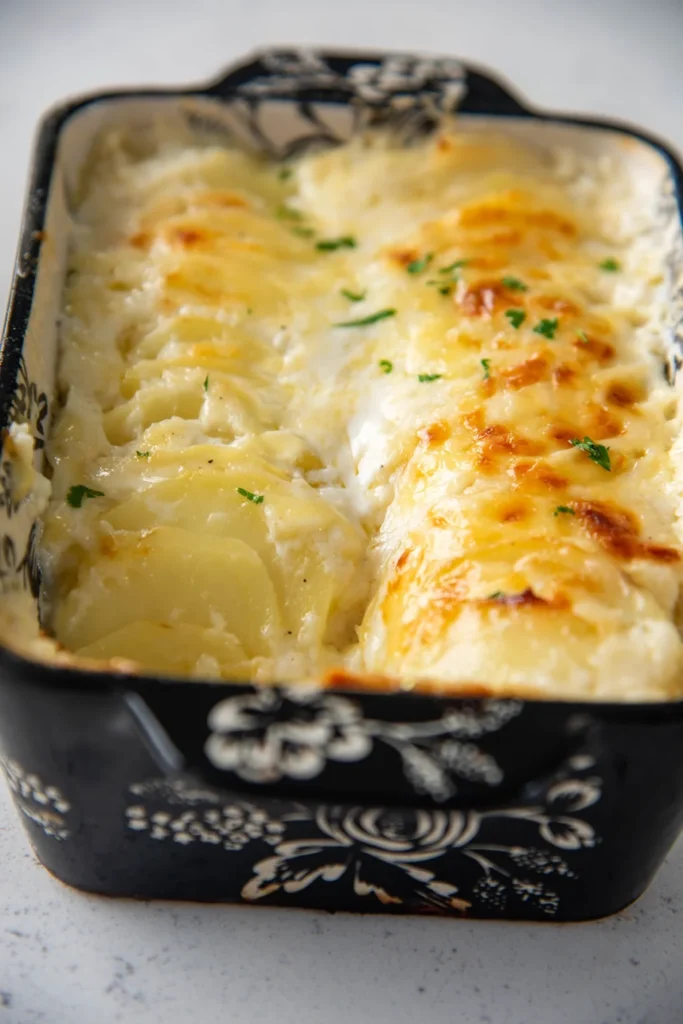
When reheating, adjust the oven temperature to 325°F. This lower heat prevents the sauce from separating. Bake for about 1 hour, or until the dish is heated through. If the top isn’t golden, broil for 2-3 minutes.
Freezing is an option, but keep in mind that dairy-based sauces may change texture. To freeze, portion the dish into airtight containers. Thaw in the refrigerator overnight before reheating.
For easy single servings, use individual ramekins. This method ensures even heating and makes portion control simple. Here’s a quick guide to reheating adjustments:
| Method | Temperature | Time |
|---|---|---|
| Oven Reheat | 325°F | 1 hour |
| Broil Finish | High | 2-3 minutes |
With these tips, you can make scalloped potatoes ahead of time and enjoy a stress-free meal. Whether for a holiday or a weeknight, this method saves you valuable hours in the kitchen.
Also Read : Mexican Casserole Recipe
Variations of Scalloped Potatoes
Exploring different takes on a classic dish can add excitement to your meals. This creamy, cheesy favorite is versatile, allowing you to customize it to suit your taste or occasion. Whether you’re craving extra richness or a protein-packed version, these variations will inspire you to get creative in the kitchen.
Cheesy Scalloped Potatoes
For cheese lovers, this version takes indulgence to the next level. Add up to 2 cups of your favorite cheese blend. A mix of Parmesan, fontina, and gouda creates a complex, nutty flavor. The result is a dish that’s closer to a gratin, with a golden, bubbly top.
Here’s how to make it stand out:
- Layer the cheese between potato slices for even distribution.
- Finish with a generous sprinkle on top for a crispy crust.
- Experiment with smoked cheeses for a unique twist.
Scalloped Potatoes with Ham
Pairing this dish with ham transforms it into a hearty main course. Diced holiday ham or crispy pancetta cubes add savory depth. This version is perfect for using up leftovers or creating a filling meal for family dinners.
Tips for success:
- Use smoked ham for a robust flavor.
- Layer the ham evenly to ensure every bite is satisfying.
- Add a touch of Dijon mustard to the cream sauce for a tangy kick.
For a vegetarian twist, try adding a layer of mushroom duxelles. This earthy addition complements the creamy texture beautifully. If you’re looking for a crunchy contrast, top the dish with a panko-herb mixture before baking.
“Variety is the spice of life—and the key to keeping your meals exciting.”
These variations prove that this classic dish can adapt to any occasion. Whether you’re serving it as a side or the star of the meal, there’s a version for everyone to enjoy.
Serving Suggestions for Scalloped Potatoes
Finding the perfect pairing can elevate any dish to a memorable meal. This creamy classic shines as a side but becomes even more versatile when paired with complementary dishes. Whether you’re planning a holiday feast or a casual weeknight dinner, these serving ideas will inspire you.
For a festive spread, pair this dish with glazed ham and roasted Brussels sprouts. The savory ham balances the creamy richness, while the sprouts add a crisp contrast. It’s a combination that’s sure to impress your guests.
On busy weeknights, serve it alongside herb-roasted chicken and steamed broccoli. This trio creates a balanced meal that’s both comforting and nutritious. The simplicity of the pairing makes it a family favorite.
Leftovers? Transform them into a hearty breakfast by pan-frying slices and topping them with fried eggs. The crispy edges and creamy center make for a satisfying morning treat.
Don’t forget the wine! A buttery Chardonnay complements the dish’s richness, while a crisp Riesling adds a refreshing contrast. These pairings complete the dining experience, making every bite unforgettable.
Also Read : Scalloped Potatoes Recipe
Conclusion
Creating a memorable meal often comes down to mastering the basics. For this recipe, the key lies in uniform slice thickness and a velvety sauce consistency. These elements ensure your dish turns out perfectly every time.
Don’t be afraid to experiment with different herbs or cheeses. Adding rosemary or swapping cheddar for gruyere can bring a fresh twist to your potatoes. Cooking is all about making it your own.
We’d love to see your creations! Share photos of your finished recipe and leave a rating to help others discover this classic dish. Stay tuned for more potato-inspired recipes, from mashed to roasted, coming soon!

